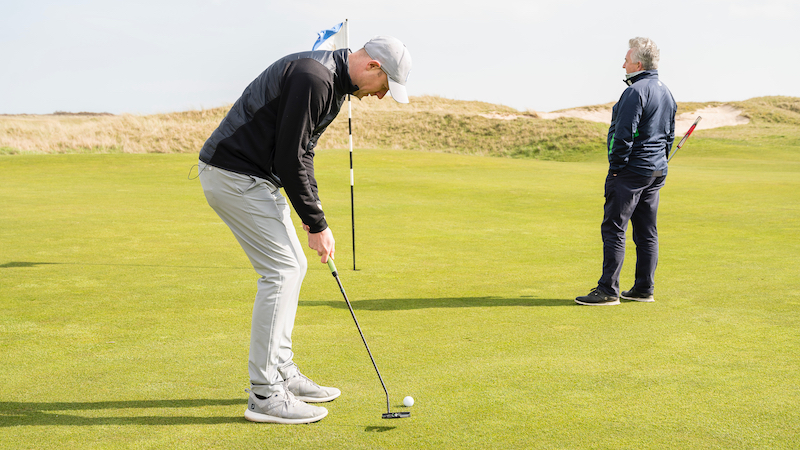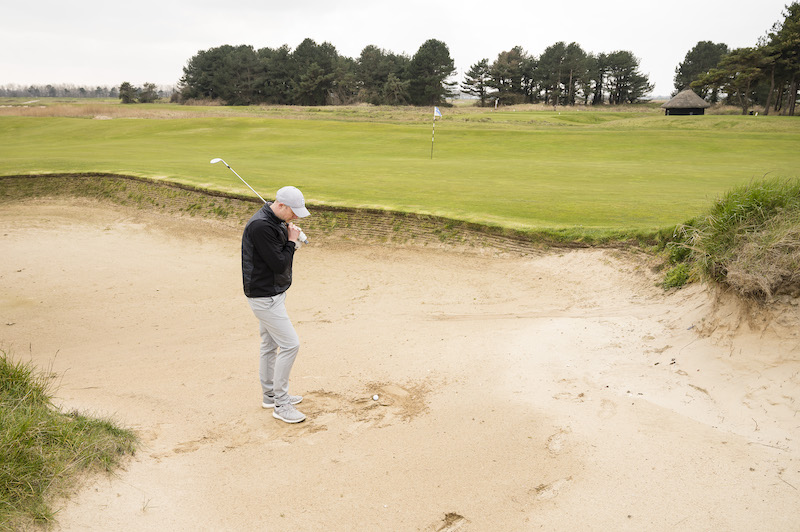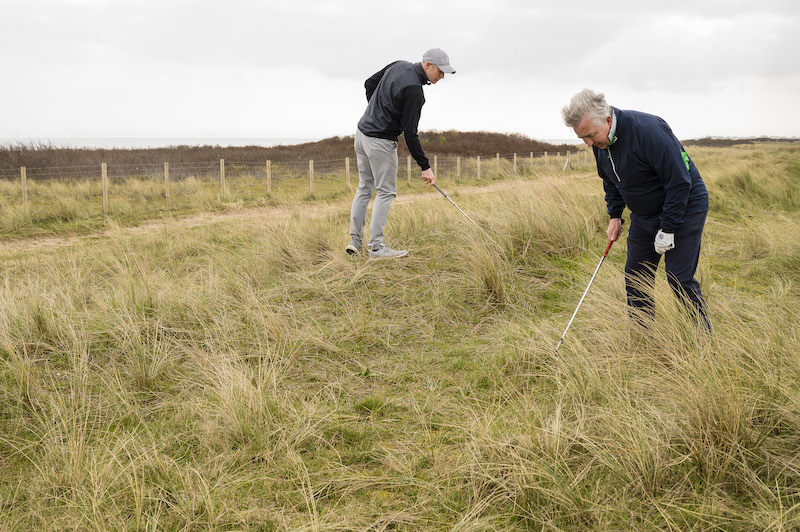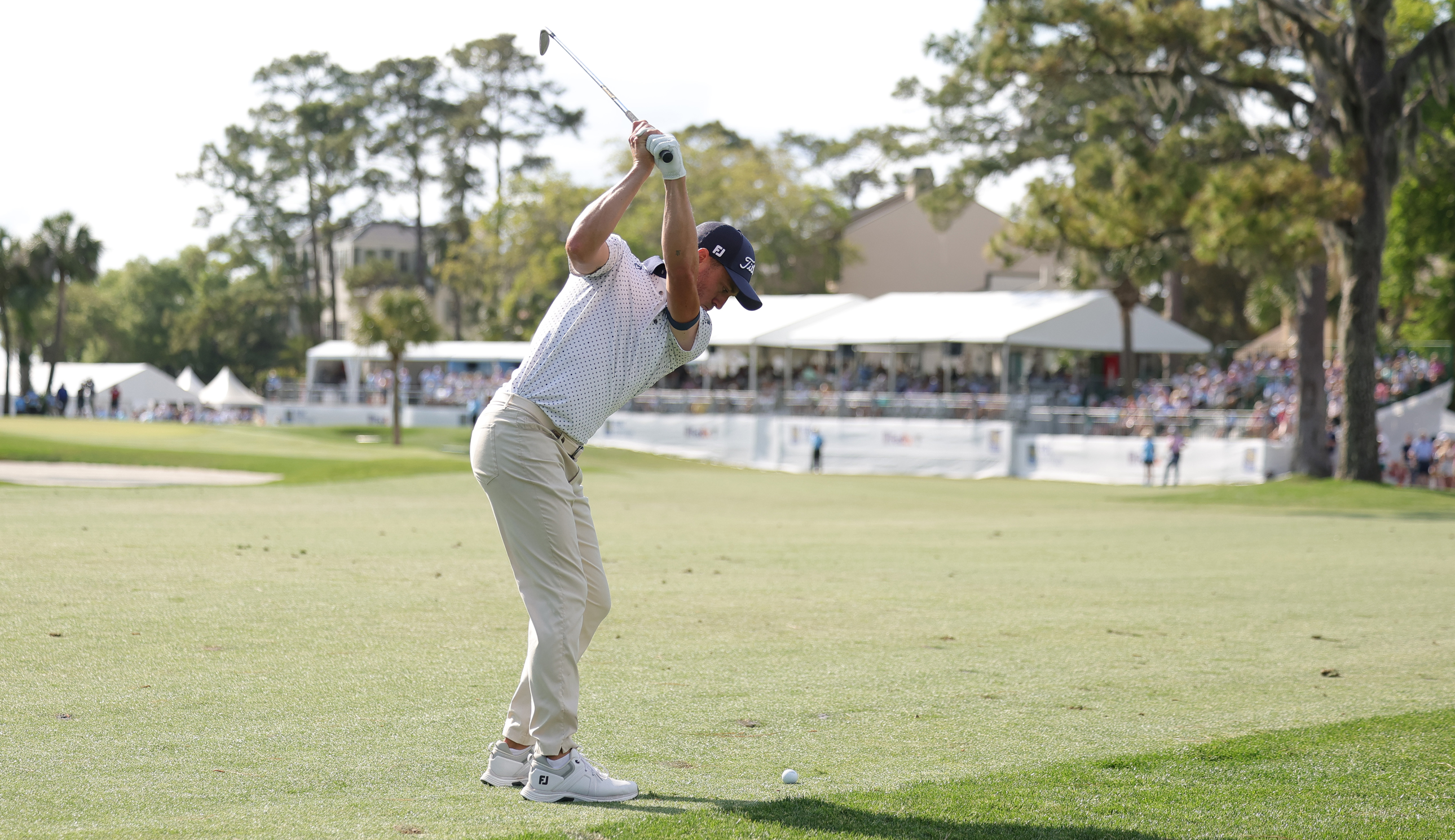7 Etiquette Mistakes To Avoid In Golf
Jeremy Ellwood and Neil Tappin discuss 7 etiquette mistakes to avoid in golf to ensure you're playing in the right spirit and being considerate to others


Jeremy Ellwood and Neil Tappin discuss 7 etiquette mistakes to avoid in golf to ensure you're playing in the right spirit and being considerate to others
7 Etiquette Mistakes To Avoid In Golf
Etiquette is a word well-known to many golfers, but from 2019, it’s a word that actually no longer features in the Rule book.
Instead, the concept of playing within the spirit of the game is now covered by Rule 1.2 – Standards of Player Conduct.
This Rule talks about the requirement to act with integrity, show consideration to others and take good care of the course.
Sticking to the old term for this story and video, we look at 7 etiquette mistakes to avoid in golf...
Where to stand
Get the Golf Monthly Newsletter
Subscribe to the Golf Monthly newsletter to stay up to date with all the latest tour news, equipment news, reviews, head-to-heads and buyer’s guides from our team of experienced experts.
Obviously don’t get too close for starters when someone else is teeing off.
Different golfers will have different preferences, but over the years we’ve found that on the tee, most golfers would like you to stand where they can see you (if tee geography allows) rather than behind them, as long as you’re not doing anything distracting.
When playing into the sun, it’s always good to try and help follow the flight of the ball for another player too. That may mean standing a little more down-the-line behind them to help you pick the flight up early. It’s all about awareness, ultimately.
Shadow on the line
On bright days when the sun is low, shadows can stretch a long way, so make sure your shadow isn’t distracting someone else, particularly on the putting green but also on the tee.
A shadow on your line can be very distracting when putting, especially as any little movements, perhaps with a club, become exaggerated when the shadows are long.
Taking care of the course
The main ways in which golfers are expected to do this is by repairing pitchmarks, replacing divots and smoothing over sand in bunkers so following players are not put at a disadvantage.
‘Make one, repair two’ isn’t a bad mantra with regard to pitchmarks.
And however bad the shot you’ve just played from a bunker or fairway, raking and smoothing the sand or replacing the divot to the best of your ability are just common courtesy to other golfers and the greenkeepers who spend hours preparing our courses.

Pace of play
There’s a very long list of things you can do to improve your pace of play, any one of which could make a noticeable difference. We won’t go into all of them here, but have just picked out three potential ways to improve your group’s pace:
Play straightaway on the tee if it’s your turn rather than marking your scorecard first.
No-one is asking you to race around the course, but ambling unnecessarily slowly, blissfully unaware of the knock-on effect it’s having on those behind, is not great either.
Do your pre-shot preparation while others are playing if it won’t distract them, so that you’re ready to go quickly when it’s your turn.
Distracting noises
When someone else is playing, try not to do anything audible that might distract them.
For example, doing up a zip, rummaging in your bag for another ball, jangling coins and tees in your pocket or clanking your clubs. It’s the sudden noise in an otherwise generally peaceful environment that can be so distracting.
Smoothing bunkers
This one is particularly important because many golfers find bunker shots testing enough from a good lie let alone a deep footprint or rut.

Obviously, things are a little different in these Covid times, but every golfer should still be doing his or her best to leave the bunker they’ve just played from in the condition in which they would hope to find it.
Letting faster players through
This is really important to keep everyone happy, perhaps particularly on a less busy course where there is scope for faster players to make good progress when waved through.

There can be many reasons for not being quick – playing as a fourball, not playing well and having to look for a lot of balls, being relatively new to the game and therefore playing more shots.
Whatever the reason, we are all encouraged to let faster players through because it’s just better for all concerned. You’re not constantly looking over your shoulder and feeling pressured, and the faster players can enjoy their game at the pace they like to play at.

Jeremy Ellwood has worked in the golf industry since 1993 and for Golf Monthly since 2002 when he started out as equipment editor. He is now a freelance journalist writing mainly for Golf Monthly. He is an expert on the Rules of Golf having qualified through an R&A course to become a golf referee. He is a senior panelist for Golf Monthly's Top 100 UK & Ireland Course Rankings and has played all of the Top 100 plus 91 of the Next 100, making him well-qualified when it comes to assessing and comparing our premier golf courses. He has now played 1,000 golf courses worldwide in 35 countries, from the humblest of nine-holers in the Scottish Highlands to the very grandest of international golf resorts. He reached the 1,000 mark on his 60th birthday in October 2023 on Vale do Lobo's Ocean course. Put him on a links course anywhere and he will be blissfully content.
Jezz can be contacted via Twitter - @JezzEllwoodGolf
Jeremy is currently playing...
Driver: Ping G425 LST 10.5˚ (draw setting), Mitsubishi Tensei AV Orange 55 S shaft
3 wood: Srixon ZX, EvenFlow Riptide 6.0 S 50g shaft
Hybrid: Ping G425 17˚, Mitsubishi Tensei CK Pro Orange 80 S shaft
Irons 3- to 8-iron: Ping i525, True Temper Dynamic Gold 105 R300 shafts
Irons 9-iron and PW: Honma TWorld TW747Vx, Nippon NS Pro regular shaft
Wedges: Ping Glide 4.0 50˚ and 54˚, 12˚ bounce, True Temper Dynamic Gold 105 R300 shafts
Putter: Kramski HPP 325
Ball: Any premium ball I can find in a charity shop or similar (or out on the course!)
-
 Rory McIlroy To Make First Competitive Start Following Masters Victory
Rory McIlroy To Make First Competitive Start Following Masters VictoryDefending champions Rory McIlroy and Shane Lowry will return to TPC Louisiana, with McIlroy making his first competitive appearance since his Masters victory
By Matt Cradock
-
 RBC Heritage 2025 Tee Times - Round Three
RBC Heritage 2025 Tee Times - Round ThreeJustin Thomas leads going into the weekend at the RBC Heritage, with the American searching for a first victory since the 2022 PGA Championship
By Matt Cradock